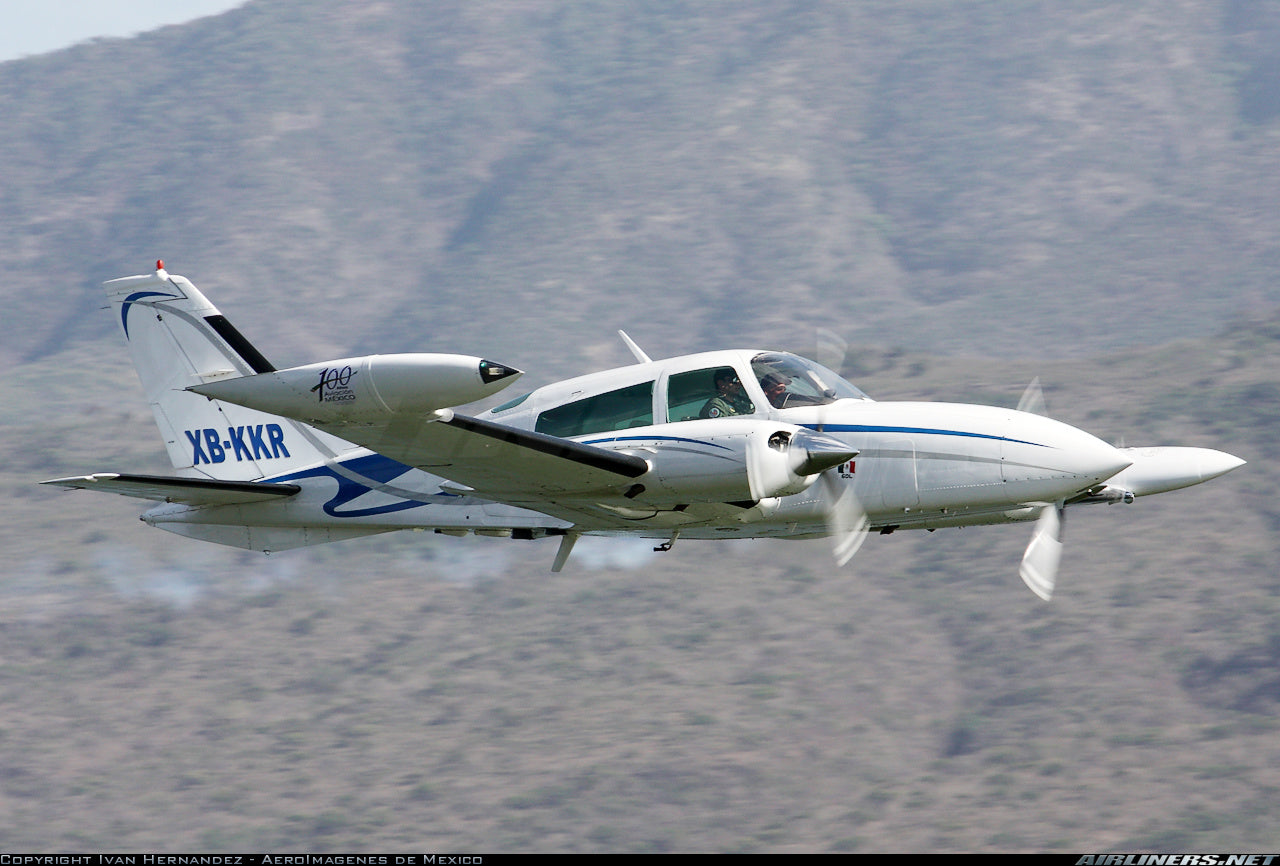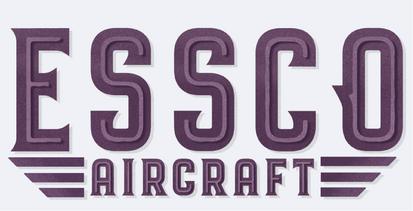
Number 42 of 100 in 100, the Cessna 310 🛩️
Conceptualization:
The Cessna 310 was introduced in the mid-1950s as a response to growing demand in the post-World War II general aviation market. Private pilots and business travelers sought faster, more capable aircraft, with particular emphasis on twin-engine models that offered greater safety and longer range than single-engine alternatives. Cessna recognized these needs and designed the 310 to address them, focusing on versatility and performance. The aircraft was intended to serve multiple roles, from personal travel to air taxi services, offering a combination of speed, efficiency, and twin-engine redundancy, making it particularly appealing for pilots looking for a step up from single-engine planes.
Original Design:
The Cessna 310 featured a sleek low-wing design, powered by two Continental O-470-B engines, each delivering 240 horsepower. This twin-engine configuration provided safety through redundancy, which appealed to business travelers and air taxi operators. The aircraft had retractable tricycle landing gear, improving ground handling and ease of landing, as well as a spacious cabin that could accommodate up to six passengers. Its all-metal, low-drag fuselage design contributed to its impressive max speed of around 190 knots, making it competitive in the market.

Photo Credit: airliners.net - Darrell Crosby
Principal Designer:
The development of the Cessna 310 was led by Dwane Wallace, Cessna’s president and a talented aeronautical engineer, who played a pivotal role in the company's postwar success. Wallace was instrumental in designing other notable Cessna aircraft, such as the Cessna 140 and 170, which laid the foundation for Cessna’s dominance in the general aviation market. The engineering team behind the 310 was experienced in designing both military and civilian aircraft, applying the latest technologies and design principles to create a versatile and reliable twin-engine plane that met the needs of both private pilots and business users.
Production Run:
The Cessna 310 was in continuous production from 1954 to 1980, with a total of approximately 5,449 units produced. Its production peaked in the 1960s and 1970s, as the aircraft gained popularity for personal, business, and charter use. Over time, market changes led to a decline in demand for twin-engine aircraft, ultimately contributing to the end of the 310’s production in 1980. Despite this, the 310 remains popular in the used aircraft market, with many still flying today, thanks to its robust design and performance capabilities.
Evolution:
The Cessna 310 underwent numerous upgrades throughout its production run, evolving to meet changing pilot needs and technological advances. Early models, such as the 310B, saw incremental improvements in power and avionics, while the 310C introduced fuel-injected engines. The 310K was the first model with optional three-blade propellers, later models like the 310R benefited from a lengthened nose containing a baggage compartment. These improvements allowed the 310 to maintain its relevance and desirability for pilots seeking performance and reliability in a twin-engine aircraft.

Photo Credit: airliners.net - Adrian Urréjola
Specifications:
Cessna 310 (1956 Model) Specifications:
-
General characteristics
- Crew: one
- Capacity: four passengers
- Length: 27 ft 0 in (8.23 m)
- Wingspan: 35 ft 0 in (10.67 m)
- Height: 10 ft 6 in (3.20 m)
- Wing area: 175 sq ft (16.3 m2)
- Empty weight: 2,850 lb (1,293 kg)
- Gross weight: 4,600 lb (2,087 kg)
- Fuel capacity: 100 US gal (83 imp gal; 380 L)
- Powerplant: 2 × Continental O-470-B horizontally opposed piston engine, 240 hp (180 kW) each
-
Performance
- Maximum speed: 220 mph (350 km/h, 190 kn)
- Cruise speed: 205 mph (330 km/h, 178 kn)
- Range: 1,000 mi (1,600 km, 870 nmi)
- Service ceiling: 20,000 ft (6,100 m)
- Rate of climb: 1,700 ft/min (8.6 m/s)
Comparison to Other Aircraft in Its Class:
The Cessna 310 stood out among light twin-engine aircraft of the 1950s for its performance and efficiency. Compared to the Beechcraft Twin Bonanza, which had larger engines (295 hp) but was heavier and less economical, the 310 was faster and more fuel-efficient. The Piper Apache, with 250 hp engines and a top speed of 187 knots, was slightly slower, and focused on affordability and training, while the 310 prioritized faster cross-country flights and higher performance. Early Beechcraft Baron models offered similar speed and range but were generally heavier and more expensive, with the 310 maintaining a better balance between cost and performance. The 310's emphasis on speed, range, and twin-engine redundancy made it a popular choice for private pilots and business travelers.
Performance:
Cessna 310 (Original Model) Performance Envelope:
- V-Speeds:
- V_NE (Never Exceed Speed): 226 knots (260 mph, 419 km/h)
- V_NO (Maximum Structural Cruising Speed): 190 knots (218 mph, 352 km/h)
- V_FE (Maximum Flap Extension Speed): 138 knots (159 mph, 255 km/h)
- V_LE (Maximum Landing Gear Extension Speed): 160 knots (184 mph, 296 km/h)
- V_LO (Landing Gear Operating Speed):
- Extension: 160 knots (184 mph, 296 km/h)
- Retraction: 138 knots (159 mph, 255 km/h)
- V_A (Maneuvering Speed): 138 knots (159 mph, 255 km/h)
- V_S (Stall Speed - Clean Configuration): 73 knots (84 mph, 135 km/h)
- V_S0 (Stall Speed - Landing Configuration): 64 knots (73 mph, 118 km/h)
- V_X (Best Angle of Climb): 91 knots (105 mph, 169 km/h)
- V_Y (Best Rate of Climb): 105 knots (121 mph, 194 km/h)
- G Load Limitations:
- Positive G Limit (Normal Category): +3.8 G
- Negative G Limit (Normal Category): -1.52 G
Performance Summary:
Approved maneuvers for the Cessna 310 in the Normal Category include steep turns, lazy eights, chandelles, stalls (except full spins), and normal takeoffs and landings, but the aircraft is not approved for aerobatic maneuvers like loops, rolls, or intentional spins. The Cessna 310 is well-suited for both personal aviation and multi-engine training, offering engine-out training opportunities for pilots transitioning to complex aircraft. Its performance, with forgiving stall speeds and solid handling, provides a good balance of safety and performance, making it accessible to multi-engine beginners. For personal aviation, the 310's fast cruising speeds, range, and ability to climb quickly in high-altitude environments make it popular for business travelers and private owners. However, pilots must be well-trained in handling the aircraft’s complex fuel and engine systems, particularly in single-engine scenarios, for safe operations.

Photo Credit: airliners.net - Jerry Search
Safety Record:
The Cessna 310 has a relatively strong safety record, though it shares some of the common risks associated with twin-engine aircraft, particularly in engine-out scenarios. Managing the complex fuel system and maintaining proper balance during flight are key safety concerns. There have been incidents related to fuel mismanagement and mechanical failures, such as landing gear malfunctions, but these are typically mitigated with regular maintenance and pilot proficiency. Compared to similar aircraft, like the Beechcraft Baron and Piper Seneca, the Cessna 310 performs well, with the main safety concerns focusing on proper fuel management and engine-out training. Overall, with adequate pilot training and maintenance, the 310 is a reliable and safe aircraft.
Acquisition Cost:
When the Cessna 310 was first introduced in the mid-1950s, its price was approximately $59,400, making it a significant investment for private owners and businesses. Today, the cost of a used Cessna 310 varies widely based on the model, condition, and upgrades. Prices for well-maintained models, such as the 310R, can range from $140,000 to over $180,000. Older models or those in need of refurbishment can be found for as low as $85,000. The wide price range reflects factors like age, maintenance history, and market demand.
Conclusion:
The Cessna 310 stands out as an important aircraft in the general aviation landscape, known for its speed, range, and versatility. Designed to meet the needs of private and business pilots in the 1950s, the 310 continued to evolve over the years, incorporating technological advancements that kept it competitive in a changing market. Its twin-engine configuration and solid performance made it a favorite among pilots seeking safety and reliability. Despite the end of its production in 1980, the Cessna 310 remains a popular and well-regarded aircraft, with many still in service today, offering excellent value for those seeking a high-performance twin-engine airplane.

Photo Credit: airliners.net - Eduardo Limon
Bibliography:
Federal Aviation Administration (FAA)
Essco Links:
